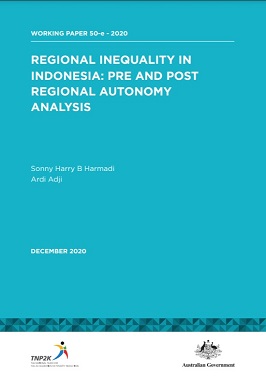Regional Inequality in Indonesia: Pre and Post Regional Autonomy Analysis
The era of reform in Indonesia was initially triggered by the monetary crisis that Indonesia experienced in June 1997, marked by the sharp decline in the value of the Rupiah, Indonesia’s national currency. In the year 1999, Law No. 22/1999 on Regional Autonomy and then Law No. 25/1999 on Fiscal Balance between the central and regional governments. Both of these laws would later serve as an “umbrella” for the implementation of fiscal decentralization in Indonesia. The implementation of regional autonomy in Indonesia was followed by the delegation of a large proportion of the central government’s affairs to the regional governments. There are 26 mandatory affairs originally handled by the central government that were delegated to, and are now implemented by, regional governments. The regional autonomy system was enacted formally in 2001. The establishment or delegation of authority to the lower levels of government is one way to improve efficiency and effectiveness in the relationship between the government and the people. The question arises, obviously, will Indonesia, with the fundamental change in the country’s political setting, be able to reduce inter-regional inequality? This paper attempts to compare the conditions of inter-regional disparity, that is comparing the conditions before (1995-2001) and after (2002-2017) the implementation of regional autonomy. Based on the results of calculating disparity among the regions related to per capita government expenditures, similar conditions to that of per capita income disparity were found. Nevertheless, one of the positive outcomes of implementing regional autonomy is the decline in educational disparity among regions.
